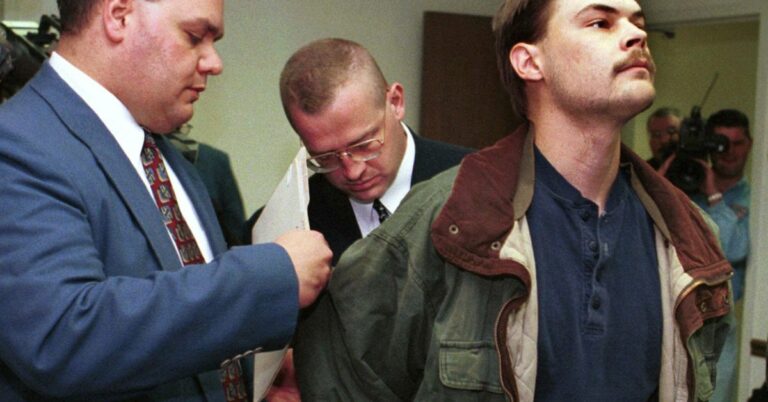
Echoes of the Past: Repeating Vaccine Blunders
The narrative of Robert F. Kennedy Jr. and his persistent, often unfounded, criticisms of vaccines has once again taken center stage. The recent actions of a CDC advisory committee, mirroring decisions made a quarter-century ago, highlight a disturbing pattern of repeating past mistakes. This isn’t just a matter of revisiting old debates; it’s a stark illustration of how misinformation, driven by personal agendas, can influence public health policy, with potentially dire consequences. The history of vaccine safety, the science, and the motivations behind the claims are crucial in understanding the current situation. What happened? Why is history repeating itself? And who stands to gain from this ongoing cycle of vaccine controversy?
In this instance, the target is once again the very foundation of public health. In the late 1990s, the Advisory Committee on Immunization Practices (ACIP) faced the issue of thimerosal, a mercury-containing preservative used in multi-dose vaccine vials. The goal was to prevent bacterial contamination, a vital measure to ensure vaccine safety. Yet, fueled by fear-mongering and lacking scientific rigor, the anti-vaccine movement, led by figures like Kennedy Jr., seized upon the presence of mercury to manufacture a crisis. The result? The unnecessary removal of thimerosal from vaccines and a surge in misinformation. This is what happened, what is happening, and what will happen if we let it.
The implications of these decisions are far-reaching, particularly for global health. Removing thimerosal from vaccines led to increased costs and logistical challenges, especially for developing nations. It also created an atmosphere of distrust, making it difficult to convince people of the importance of vaccination. This distrust has contributed to a decline in vaccination rates, leaving vulnerable populations at risk from preventable diseases. We must analyze the details of what transpired and assess the wider ramifications on both local and international levels. The current approach jeopardizes not only the scientific integrity of vaccine development but also the public’s confidence in vaccination programs.
The Thimerosal Controversy Revisited: A History of Misinformation
In the late 1990s, the focus was on thimerosal. The impetus behind the initial amendment was the known toxicity of mercury at high levels. Anti-vaccine groups, led by Robert F. Kennedy Jr., argued that thimerosal was causing brain damage, including autism. The anti-vaccine groups were highly vocal in their claims about the dangers of thimerosal in vaccines, contributing to widespread fear and misinformation. Their arguments, based on cherry-picked evidence and unsubstantiated claims, resonated with a public already concerned about potential vaccine side effects. The narrative of a nefarious plot by pharmaceutical companies to harm children, fueled by Kennedy Jr., spread quickly, reaching a critical mass of parents. What was the impact of these arguments on the public’s perception of vaccines? How did these false claims gain such traction?
The problem was the information being shared, which was far from the truth. Studies showed that thimerosal, in the amounts used in vaccines, was not harmful. The levels of mercury were trivial compared to the mercury encountered in everyday life. Moreover, scientific studies showed that children who received thimerosal-containing vaccines were not at greater risk of neurodevelopmental problems than those who did not. Despite this reassuring evidence, the CDC and the American Academy of Pediatrics (AAP) supported the removal of thimerosal from vaccines. This decision, driven by public perception rather than scientific evidence, had a series of unforeseen consequences. It led to increased costs, logistical challenges, and, ironically, an increase in autism rates.
The removal of thimerosal was not based on scientific evidence of harm. The AAP, in July 1999, even stated that thimerosal in vaccines was safe. But in an effort to make the vaccine seem safer, they removed it anyway. This action set a dangerous precedent, where the perception of safety took precedence over the actual scientific findings. Certain vaccines became less available and more expensive, impacting public health initiatives. It also created an environment where unsubstantiated claims about vaccines could thrive, sowing seeds of mistrust in public health institutions. The events of this time demonstrate how misinformation can undermine public health initiatives. How does this historical context inform our understanding of contemporary anti-vaccine arguments?
Aluminum Adjuvants: The New Target
The latest chapter in this story involves aluminum adjuvants, compounds added to vaccines to enhance the immune response. These adjuvants are used in several vaccines given to children, making them a new target for anti-vaccine advocates. Much like the thimerosal controversy, the same tactics are being deployed to create doubt and fear. The strategy remains consistent: misrepresent scientific data, exploit public concerns, and undermine confidence in established medical practices. The goal is to create an atmosphere of distrust, where parents are reluctant to vaccinate their children, leading to a resurgence of preventable diseases. The playbook is the same. Find a willing advocate to present flawed data to the committee, and then push for the elimination of these adjuvants from vaccines.
What makes aluminum adjuvants the new target? Are there valid safety concerns associated with them? Or is this another instance of unfounded fear-mongering? The answers require a careful assessment of the science, the motivations of the key players, and the potential consequences of their actions. Unlike thimerosal, which was simply removed from vaccines, removing aluminum adjuvants could render the vaccines themselves ineffective. This raises serious questions about the motives of those pushing for these changes and the potential harm they could cause. It’s not about improving vaccine safety, but rather about financial gain through lawsuits. The plan is to add aluminum adjuvants to the list of compensable injuries in the Vaccine Injury Compensation Program (VICP) or remove those vaccines from the VICP and expose them to civil litigation. This is a repeat of what happened in the early 1980s. The focus is on financial gain, at the expense of children’s health.
This entire sequence of events is a dangerous combination of misinformation, personal agendas, and a disregard for scientific evidence. The consequences are not merely theoretical; they have already resulted in reduced vaccination rates, increased disease incidence, and a decline in public trust in health institutions. To prevent history from repeating itself, it is essential to understand the patterns of behavior, the motivations of the key players, and the underlying science. We must be vigilant in challenging misinformation and promoting evidence-based approaches to public health. The fight against vaccine misinformation requires a multi-pronged strategy. How can we counter misinformation effectively, promote vaccine literacy, and protect public health from those who would undermine it for personal gain?
Conclusion: Learning from History or Repeating It?
The story of vaccines and misinformation is a cautionary tale. The saga of Robert F. Kennedy Jr. and his repeated attacks on vaccine safety serves as a clear warning. We must learn from the past and prevent history from repeating itself. The consequences of repeating past mistakes could be severe, especially for the health of children. The decisions made today will shape the future of public health, therefore, it’s more important than ever that we stay informed and support evidence-based approaches. The irony, as highlighted in the original article, is that those who fight against vaccination often end up causing the very problems they claim to be preventing. It’s a circle of fear, misinformation, and, ultimately, harm.
This is the crucial question. Will we learn from history, or will we repeat the mistakes of the past? The answer depends on our ability to understand the science, challenge misinformation, and prioritize the health and well-being of our communities. Only then can we hope to protect ourselves and our children from the damaging effects of unfounded fear and baseless accusations.



